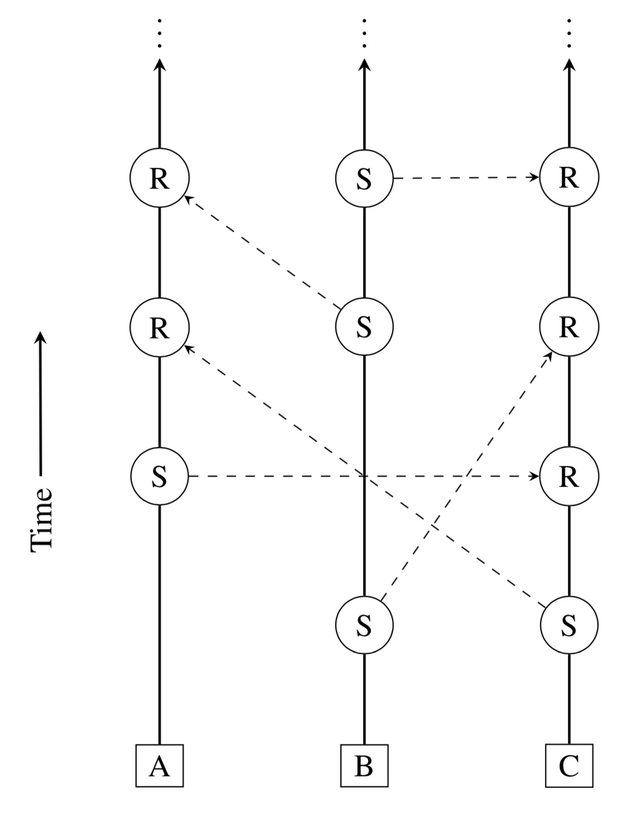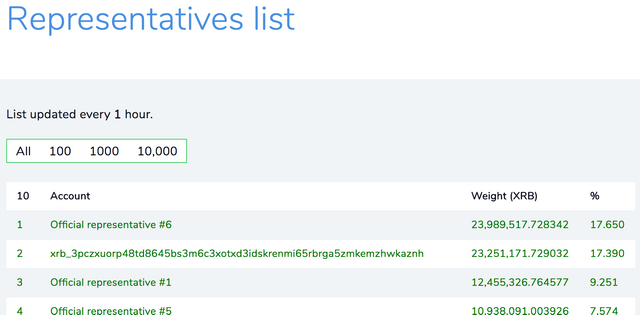Nano — Crypto Analysis
Nano — Crypto Analysis
RaiBlocks, now rebranded Nano, promises us to deliver one thing and to deliver it good: transactions. In this thread we evaluate the technology, potential grow of the currency and practical aspects on how to use it.
TL;DR
- First blockchain to implement DAG instead of plain blockchain
- Transaction scalability in the order of 10k tps
- Zero fee transactions with confirmation times of around a second
- Transaction throttling via PoW
- Elaborate attacks could theoretically double spend with 1/3 of network market cap
- No explicit incentive to run a node
- Very efficient pruning of old transactions
- Network is live and wallet is relatively easy to use
- Initial distribution via faucet, immutable supply
- No smart-contract support
The technology
Reading the Nano whitepaper was definitely interesting. The architecture of the blockchain, outlined in 2014, was one of the first of its kind to depart from the traditional chain of blocks to migrate to a more nano-blockchain graph.
Every account has its own blockchain and every block it's a single transaction. One immediate consequence is that pruning becomes very easy. Every account publishes its own balance on the latest block, this means that if I’m interested only in the balances, I can just keep one block per user.

Furthermore there is no block time. I can publish as many blocks as I wish on my own account-chain. It will not impact others that much because of the pruning just mentioned. Flooding is prevented by associating a small PoW for every block, so there is effectively a per-user tsp limit.
Who pays for the infrastructure?
There are no transaction fees. You can send 1 XRB back and forth between two accounts and you will only spend a bit of CPU power for the PoW, your 1 XRB will remain intact.
This is how the network is therefore powered, by distributing the load to end-users, similarly to how IOTA did.
Since the PoW is very easy to solve, even inexpensive hardware can send and receive transaction in a reasonable amount of time. From the point of view of the user though the transaction appear instantaneous because the PoW can be computed in advance. Unlike Bitcoin it is not based on the whole block, but only on the preceding block header, which is already known.
What’s the incentive to run a node?
You could be asking at this point, what are the gains for full nodes? The nodes that actually relay transactions, solve disputes when double spending occurs, keep the full history and so on?
The answer is none. No incentive is given. And this could arguably an error of design for this chain. On the other hand, the value of the system is mainly the free and fast transactions and one could decide to run a node just to keep his investment at stake safe from attacks. This could be viewed as an indirect incentive on its own.
The world is full of stable economic systems that have no direct incentive to spend money say for advertising. Yet building a brand, while a net loss for the company in the immediate term, will guarantee future returns in an indirect fashion. This mechanism is even easier to understand in the case of Nano.
Network security
The security in Bitcoin and other PoW based blockchains is given by the difficulty to ammass enough computing power to gain a high probability of creating the next block and a certain number of blocks after that. That would require at writing time an immense political and monetary power.
Nano's guarantees in terms of security are based on the staked amount in a proof of stake. People vote power is relative to how much money they have. They can vote a representative to solve conflict when multiple blocks are valid (double spending).
In their whitepaper they outline that a sophisticated attack could be mounted so that it could be feasible to double spend with a stake of 33% of the total market cap.
In my opinion this guarantee is weaker that the one provided by bitcoin, but is hard to quantify security without a lot of assumptions. It's always more of a political issue than actually technical because one could convince 33% of the users to be voted by the protocol and stake in their stead.
Attack of this scale have been performed rarely in the blockchain world and they don't always have catastrophic impact, see the Ethereum DAO's attack.
Unlike IOTA there is no concept of partial view of the network, and in Nano there is no feature to perform offline transaction. On the other hand in IOTA there is no proof that a transaction is not a double spend for offline parties. However I see much more potential for offline transactions, at least from the sender point of view, in Nano. That's because every user has it's own blockchain and it's easy to sign a new block/transaction giving money to someone.
Privacy
Nano is currently as public as bitcoin. No privacy whatsoever. RaiShaker is a discontinued project with features similar to bitcoin washing machines.
 On the other hand, privacy is clashing a bit with the security of the network since, if it becomes clear that there is an actor controlling more than 33% of the stakes, people would mobilitate to vote for another staker.
On the other hand, privacy is clashing a bit with the security of the network since, if it becomes clear that there is an actor controlling more than 33% of the stakes, people would mobilitate to vote for another staker.
Performance
The network is fast on paper with transfer times measured in seconds. The number of transaction per second is theoretically unbounded since there is no block time. The current bottleneck seems to be the IO of current node's hardware. Reference implementations have been observed processing 10'000 transactions in a second.
From this perspective Nano does one thing and it does it very well. Scalability and performance is really a good balance between fast transactions and network DDoS protection.
What about 10'000 tps is not enough? We are in the order of magnitude of Visa but in the future maybe we will need a million transaction per second. Again, Nano is a DAG so there is no inherent order of the blocks, future implementations may scale well provided a parallel hardware and adeguate software is developed.
The blockchain as a whole is very small even in it's full historical form. But again, when pruning will be implemented, much of it can be safely be deleted from most of the nodes.
Review of the current wallet
I've been using both the online wallet and the portable computer wallet. My opinion is that this is still not "facebook" or "google" user-friendly but we are definitely getting there.
The online wallet is just a light node but you still retain your private keys. The portable computer wallet can be bootstrapped by downloading the daily blockchain file (which is currently just over a GB) and you’re ready to go.
The only thing I found confusing is that, in the advanced panel, if you put Mxrb or kxrb as a unit of measure, you’re not going to see smaller change as a decimal fraction after the dot. So when I first moved some xrb I just got 0 as a balance. You have to set to a smaller unit of measurement to see your pennies.
Should I invest in it?
This project looks straightforward it just does one thing, move currency from A to B.
The supply is fixed forever which means this is an deflationary currency, which in practice is what Bitcoin and Ethereum are since a lot of the coins get lost or burned from time to time.
Transactions are free and fast and the blockchain is actually working smoothly. Not every promising project actually reach this stage.
The nano rebranding was a nice move. It will be a bit confusing for some time but it will certainly appeal to more and more people.
Finally the trading volume is on the rise so that suggests the price is consolidating on a bigger number. Since this is a deflationary currency, in principle, it’s always the right time to buy.
I invested a small percent of my portfolio but I will probably accrue more of it as time goes on and the price suggest a bull run.
How to buy Nanos
Most of the trading is currently happening in Kucoin, but historically BitGrail was the first exchange to trade them. I would suggest opening an account on Kucoin for the time being in case you haven’t done it.
Nice info on Nano, was looking for something like this. Will read the whole post tomorrow @remind.bot 19 hours
Mentioning and replying to you here on Fri, 16 Feb 2018 21:20:36 GMT to remind you of this post.
Please consider upvoting this comment to keep this service running.
Reminding @cmichel of this post as requested!
Please consider upvoting this comment to keep this service running.
lol nice bot...
Coins mentioned in post: